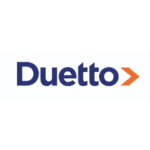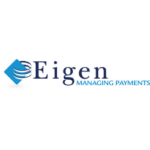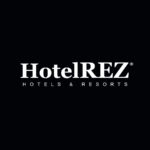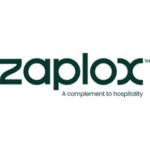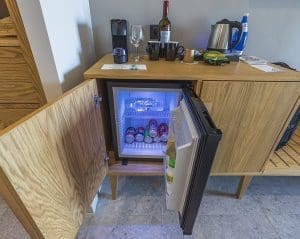 We have made it through the most severe period the global hospitality industry has faced. Travel restrictions and lockdowns belong to the past and people are comfortable traveling again.
We have made it through the most severe period the global hospitality industry has faced. Travel restrictions and lockdowns belong to the past and people are comfortable traveling again.
But while recovery is in full swing in many markets, things aren’t going back to how they were.
Things have changed because of the pandemic and we experience new travel trends and changing guest behavior. Guest booking behavior has shifted, and previously well-established travel patterns have been replaced by new, unfamiliar ones.
At first, this sounds like a massive new challenge but if you manage to monitor, predict and act on these changes, you can be ready to leverage these challenges and make the most of them at your hotel.
New guest behavior trends
Shifting seasonal trends
Many markets used to rely on seasons of high and low demand. But what was once predictable and expected is now much more variable.
Today, more guests are willing to travel during off-peak times. That includes periods before or after traditional high seasons and historically low-demand midweek days.
The Vrbo Trend Report 2022 reveals that the popular apartment rental platforms registered a 33% year-on-year increase in undated searches. This shows people have become more flexible with their trip’s timing. Marriott spokesperson Benjamin Gerow sees this at his group’s properties as well. During an earning call, he shared that shoulder days of Thursday and Sunday had already rebounded to just below 2019 levels.
This creates possibilities for your hotel to boost occupancy and revenue during traditionally slower periods. Be creative and offer value-packed deals or beneficial rates for shoulder days as well as pre- or post-season periods to attract today’s more flexible travelers.
Remote working and extended stays
The idea of remote work or bleisure travel isn’t new but the pandemic made it bloom. Expedia’s 2022 Travel Trends Report saw 56% of respondents saying they want to take a bleisure trip in the near future.
Vrbo’s 2022 trend report showed the same result, having found that 44% of families said they were more likely to work remotely in the future. The report also presented a 68% demand increase for 21- to 30-day stays. This shows that extended stays are likely to remain popular.
All this is good news for hotels with co-working facilities, services, and packages that cater to remote workers. Think about how your property could attract this new guest segment to take full advantage of this lasting trend.
Travelers want to do major trips
Now that long-distance travel is finally possible again, travelers are ready to splurge on the trip of a lifetime. For many, now is the time to make up for experiences and dreams they feel they missed out on during the pandemic.
A research by Accor, showed that 80% of UK residents want to travel in 2022 and are planning to spend 39% more on it than in 2019. It’s the same pattern in the United States. Data shows that 68% of Americans want to take a major trip to destinations in Europe and Asia this year. The situation is resembling in other major destination markets.
This gives you the chance to increase your ADR and drive more direct bookings with value-packed offers exclusive to your hotel website.
Growing demand for digitalization and personalization
As technology becomes a more natural part of people’s lives, this sets all kinds of customer expectations, which puts a certain pressure on hotels. For example, guests continue to demand a higher level of digitalization and quick replies regardless of which channel they use to request information.
Guests also look for a certain level of personalization before rating service as good. They want to feel unique and have a valuable experience. This can create a challenge for hotels as many are understaffed, and personalizing services demands an increased effort.
Leverage technology to benefit from these trends
- Monitor and understand where demand is coming from: first, explore which source markets are searching for your destination. This may be different from pre-pandemic times, so do your research. There are RMSs on the market that reveals booking intent before the reservations start coming in and allow you to react in time. For example, you can use this data to geo-target promising markets with relevant ads and adjust your pricing to reflect higher demand levels.
- Don’t discount: demand is there as well as the willingness to pay. In most cases, discounts would mean leaving money on the table. If you’re unsure, use an automated RMS that considers all important market and demand signals. By doing so you’ll offer the optimal rate at all times, even if demand patterns are significantly different from before.
- Implement flexible pricing techniques: with a modern RMS, you can create more fluid and even independent pricing hierarchies for your room types. Set minimum and maximum rates for dates you know will show exceptional demand or strategically price one room category to generate more demand for another.
- Quality before quantity: attracting slightly fewer guests at higher rates makes it easier to provide the service that justifies your prices despite the staff shortage.
- Offer additional value and pre-arrival personalized offerings: during the pandemic, many hotels dropped their rates, and travelers got used to discounted prices. Add value to every booking and make your higher prices reasonable by offering inclusions that people truly appreciate. That could be a free airport transfer, breakfast, or a free massage. Make these perks exclusive to direct bookers to boost website conversions and save on commissions. If you haven’t offered this from the start, don’t worry, you can still offer upselling offerings to your guests, prior to their stay. Use an automated upselling tool to enhance the guest experience through targeted and personalized pre-arrival upselling deals. This will help you drive incremental revenue through targeted upselling.
- Increase the level of automation by optimizing workflows with digital communication: this can save you time and resources, all while allowing you to offer all guests personalized service. With the right tools, you can gather the data from your customers to track their history and preferences, schedule communications to segmented groups, automate responses after office hours, and more. In this way, you are using your data to optimize your guest relationships, customize interactions, create value, and increase your bookings.
“Creating a memorable guest experience means reaching out to your customers through their preferred channel. Why send an email if they prefer a WhatsApp message? Choosing the right channel will not only boost your conversion rate. It’ll also make your guest feel seen and heard,” says Daan De Bruijn, Co-Founder of Bookboost, a hospitality platform that collects and structures guest data to create meaningful guest relationships.
Since travel patterns and booking behavior are different from what we’re used to, predicting demand has become more difficult. That makes it almost impossible to adjust rates manually and make the most of emerging revenue opportunities. Advanced business intelligence solutions and an automated RMS that instantly picks up on changing demand is the key to solving this problem. And it’s your ticket to maximizing revenue throughout this challenging yet promising recovery phase.














